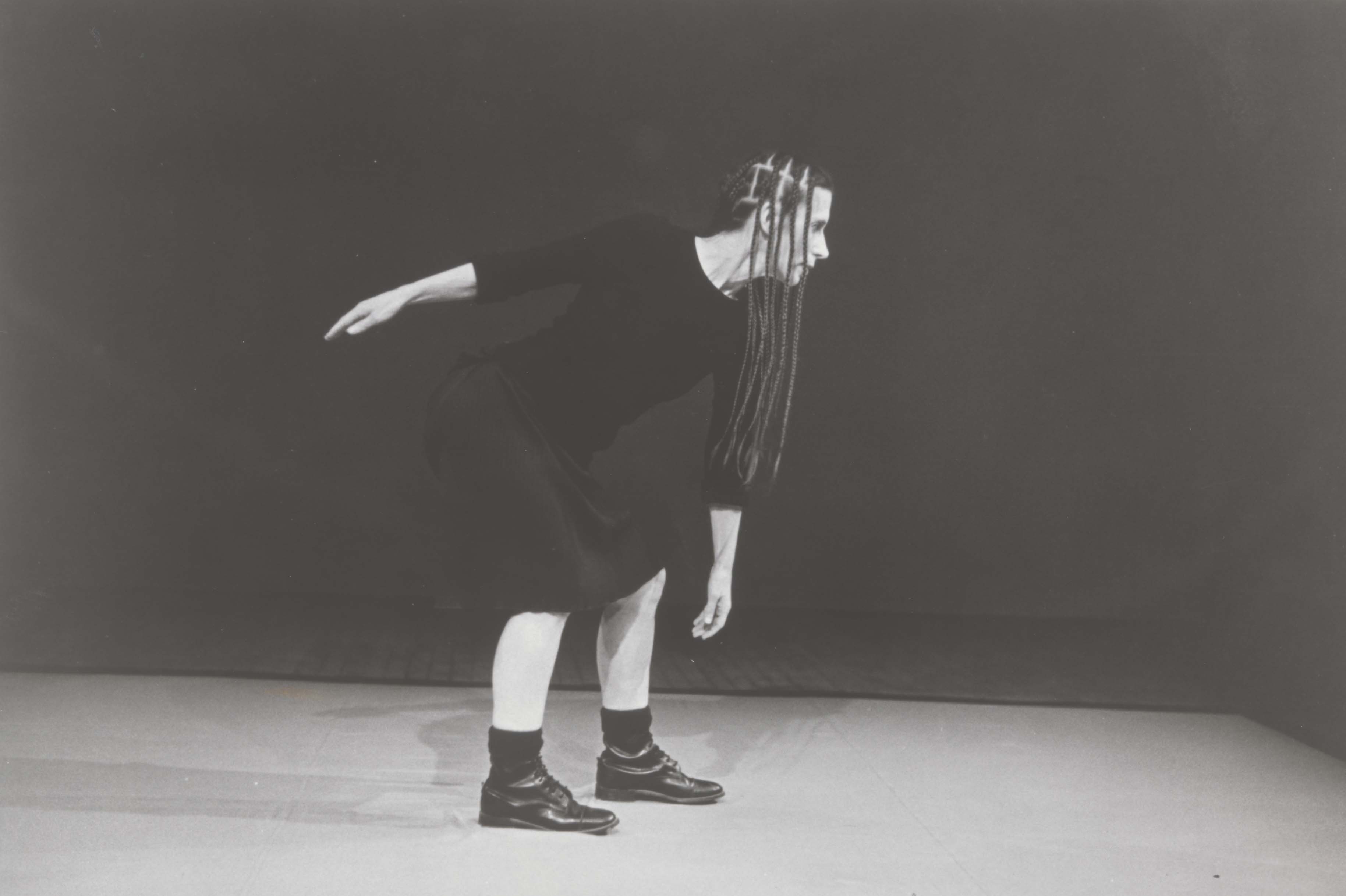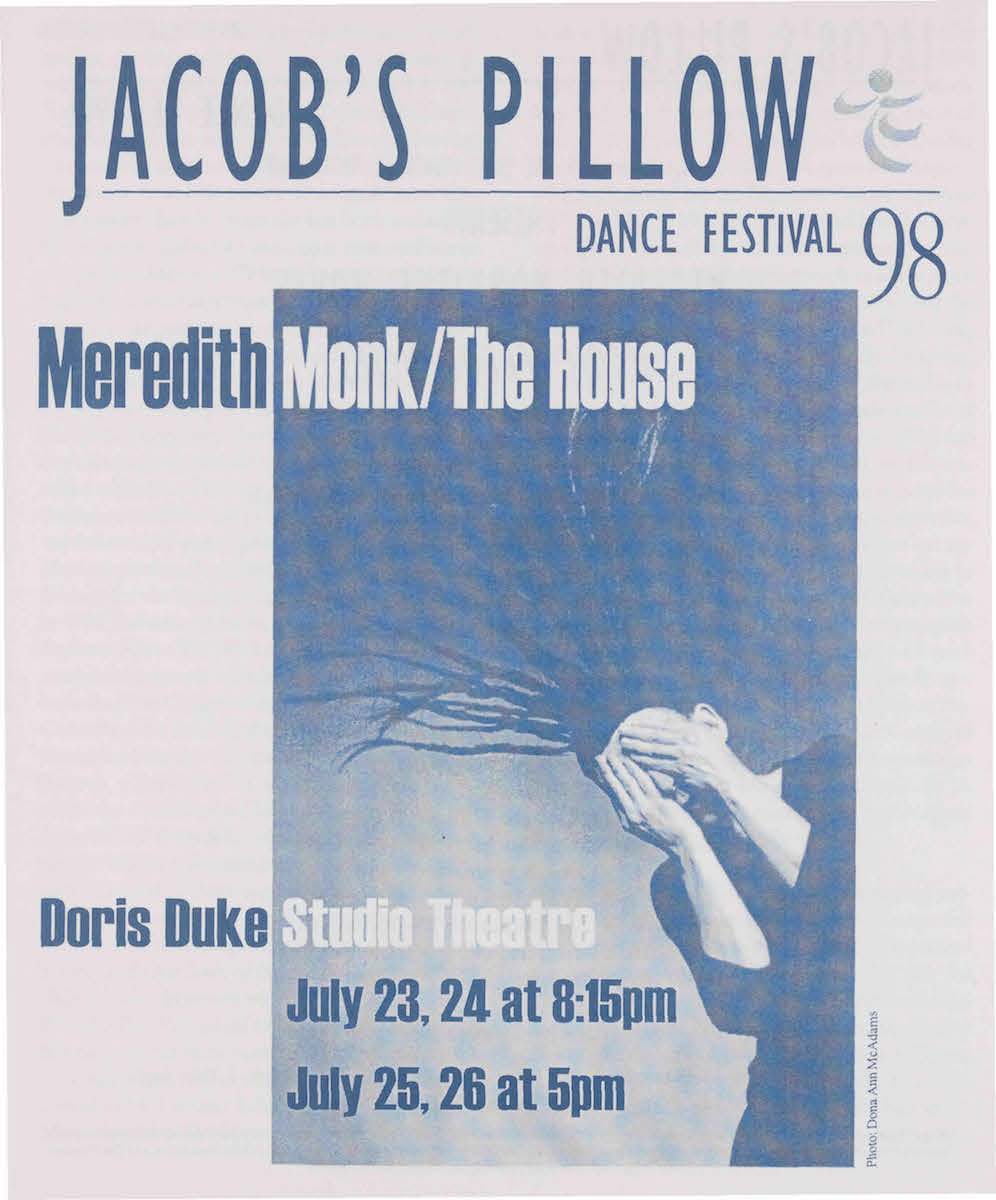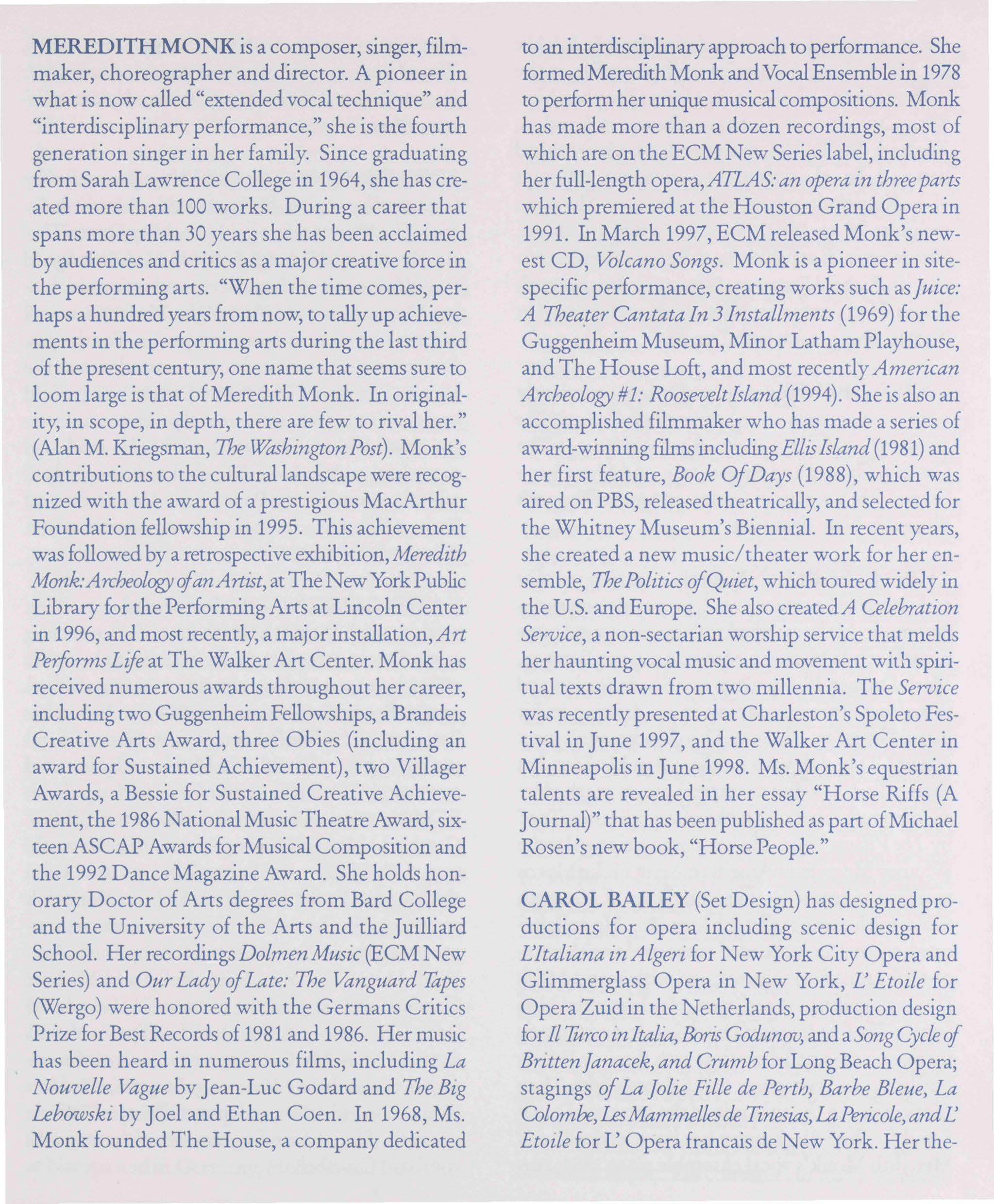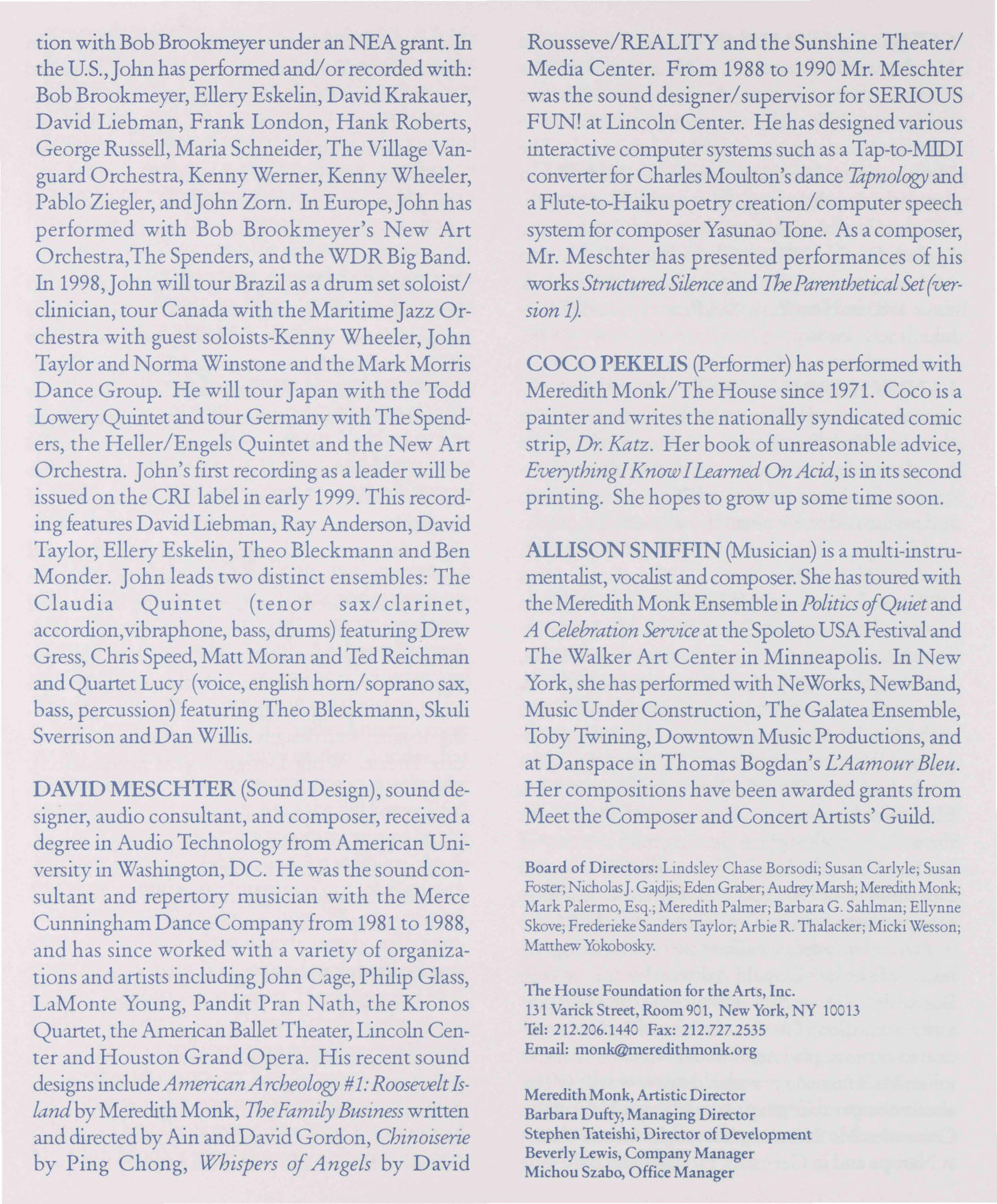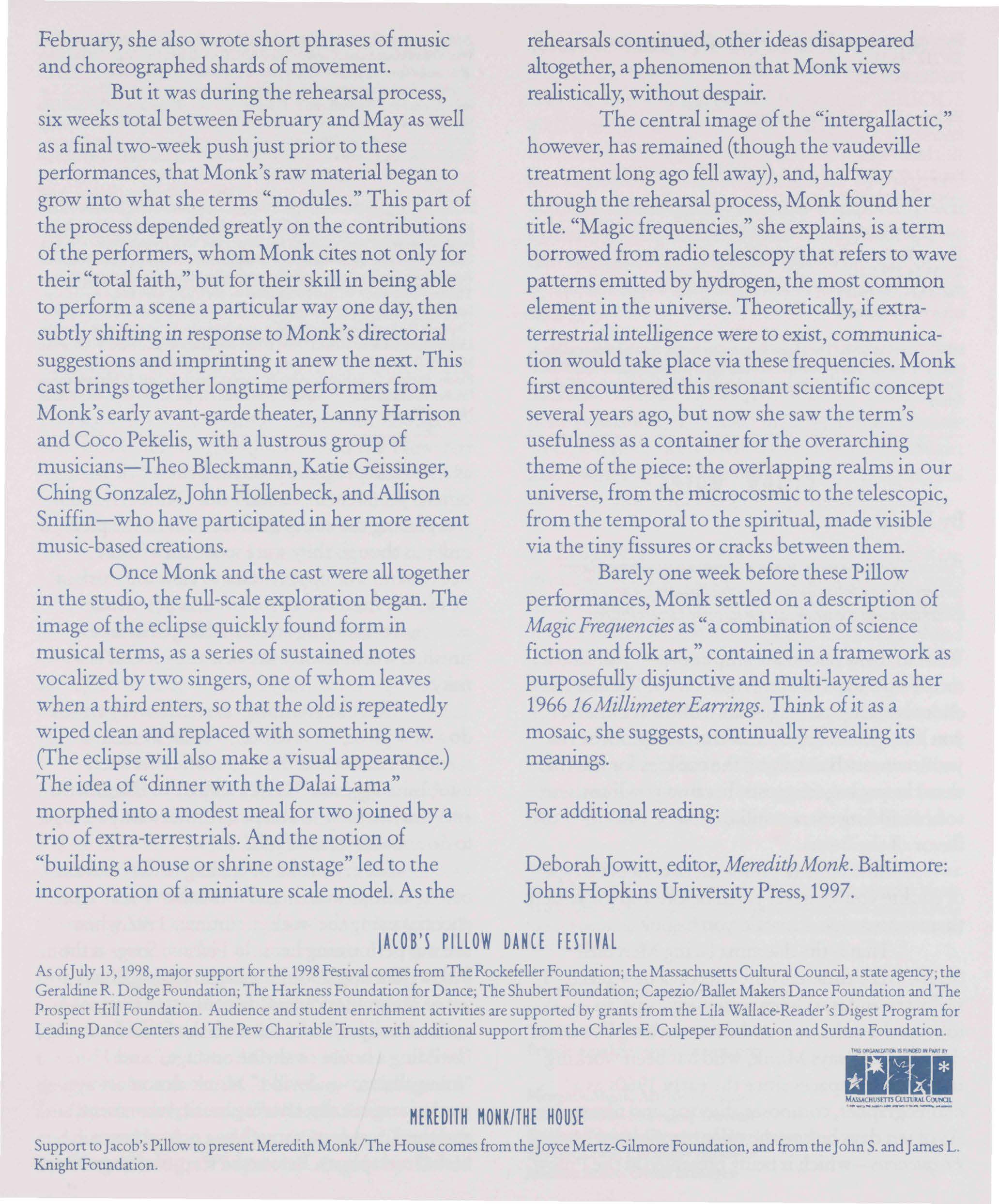Introduction
Meredith Monk: dancer, singer, choreographer, composer, filmmaker, director. The list of job titles is numerous and it’s in this multiplicity that a singular artist is forged. Monk has made large-scale works, chamber works, and solos in the overlapping fields of dance, music, theatre, opera, performance art, and film. Sometimes all of the fields at once, sometimes one art form leads, while others move into supporting roles. She has been equally lauded for her work in music (NPR’s 50 Great Voices; Musical America‘s Composer of the Year) as for her work in dance (Samuel H. Scripps American Dance Festival Award, Rockefeller Foundation Distinguished Choreographer Award). At the Pillow, Meredith Monk has presented solo works and works with her ensemble. She has sung on the Inside/Out stage, and sung and danced, and hummed, and played the piano, and created magic in the Doris Duke Theatre. Her initial Pillow experience was as a 16-year-old student, studying for a full summer at the Pillow’s University of the Dance in 1959.
Dance and Music
According to Pillow scholar David Gere, Monk’s ideas about music and dance expanded when she worked with Bessie Schönberg at Sarah Lawrence College starting in 1960. Schönberg was a master choreography teacher, directing the Choreography Workshop at The School at Jacob’s Pillow for many years.
In a 1985 commencement speech at Sarah Lawrence College, Monk recounted,
“The first thing Bessie taught me was not to take myself so seriously—that everything that I came up with was not perfect by any means; it could be thrown away (and mostly should be thrown away) in order to start again. She also taught all of us to be respectful of each other—to appreciate each person’s particular talent, styles, rates of growth for what they were. In other words, not to have a preconceived idea of what a body is, a dance is, a song is, a play is. This basic attitude (a kind of psychic anarchy) has given me the courage to try to find new ways of putting art forms together by working between the cracks; it has taught me never to assume anything; it has made the process of discovery one of the great joys of my life and it had kept me curious.”Sarah Lawrence Commencement Speech, http://gos.sbc.edu/m/monk2.html
Gere also notes that as Monk was beginning to create the 1994 solo work Volcano Songs, seen at the Pillow in 1997, she traveled to Bali where she discovered “that the act of music was an act of transformation.”
Monk returned to the Pillow in 1998, with her company The House, for a work-in-process showing of Magic Frequencies that would premiere in October of that year in Munich.
Monk’s works have inspired many, many other artists. Not only have choreographers used her music for their own dances, and performed in her work, she has emboldened a generation of artists to not worry about the artistic disciplines in their work (is it dance? is it theatre? is it opera?), and to simply make the work they want to make.
She explained her own creative process in another interview with Gere. “I really try and start from zero every time, to tolerate the unknown and do something I’ve never done before. It’s like jumping off a cliff every time I do a new piece. That’s all part of the process and you just have to accept it. Otherwise you have to do another kind of job.”
To read more about how she began conceiving of ideas for Magic Frequencies while in residence at the Pillow, read the PillowNotes in the 1998 program below.
PUBLISHED March 2017
